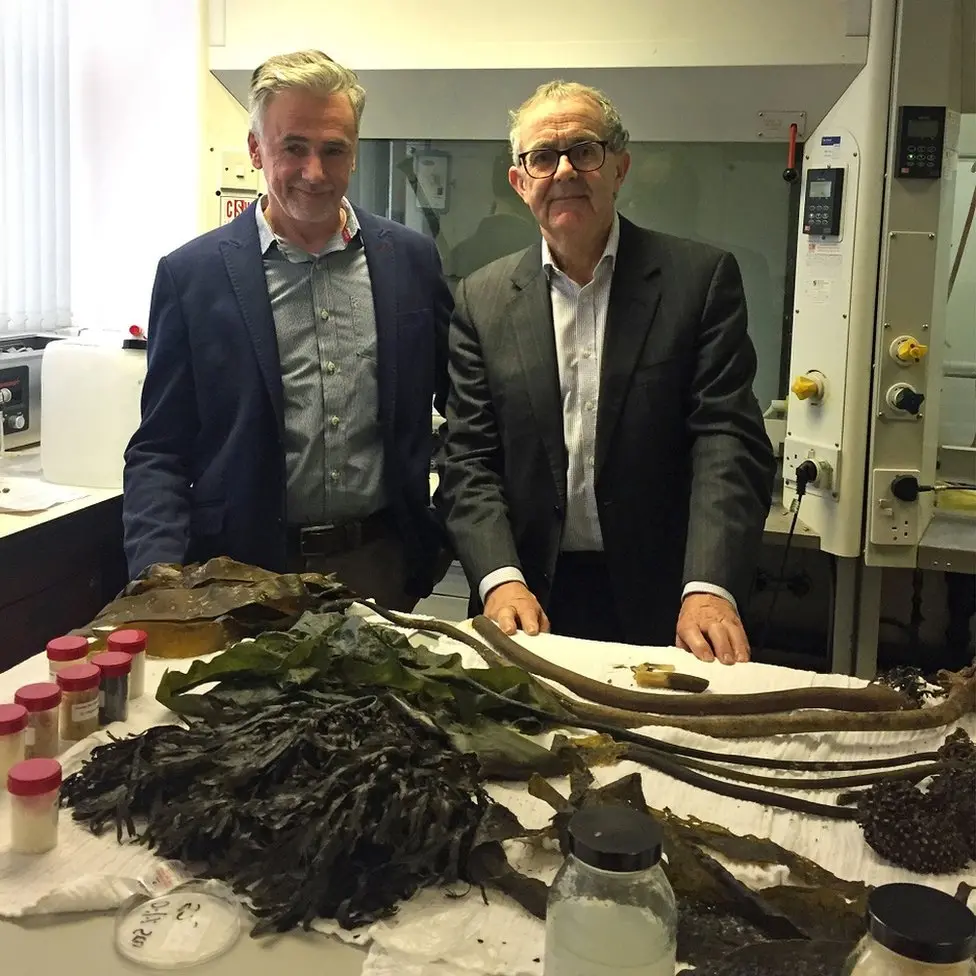As the world looks for alternatives to petroleum-based products, researchers are turning to the ocean for solutions. Dr. David Mackie, co-founder and director of Marine Biopolymers Ltd. (MBL), shares his vision for a sustainable future powered by bio-based materials—particularly those derived from seaweed.
The work of Dr. David Mackie has largely focused on extracting valuable compounds like alginate and cellulose from seaweed. Unlike many modern operations that rely on cultivated seaweed, Mackie works primarily with wild varieties, employing both mechanical and mild chemical methods. “Me and my team are focused on the biorefining of seaweed. We take out components from seaweed, such as polysaccharides, alginate, cellulose,” Mackie explains. “We also try to use as little water and energy as possible and recycle within the process”, he points out.
By replacing harsh chemicals such as formaldehyde (common in traditional alginate recovery) with safer alternatives like hydrogen peroxide and sodium carbonate, Mackie and his team aim to minimise environmental impact. The outputs of this seaweed processing have broad applications. Sodium alginate, for example, is not only food-safe but also used in pharmaceuticals, such as well-known anti-reflux drugs. “Alginate is quite a bio-neutral material and very compatible with the body,” Mackie says.
While the promise of bio-based products is substantial, the challenges are real—particularly when it comes to scale. “People talk about the bioeconomy as if it can replace plastics or petrochemicals. No. Very difficult. We’re far from that,” Mackie asserts. For perspective, global PET (polyethylene terephthalate) plastic production reaches about 20 million tonnes per year, whereas alginate production is roughly 50,000 tonnes. “You can’t fill the oceans with seaweed. It’s not technically or environmentally feasible,” he warns.
Beyond raw material limitations, viscosity in alginate processing, capital infrastructure geared toward petrochemicals, and entrenched consumer habits all present hurdles. Even when alternatives are available, industries often hesitate to switch. Infrastructure investments, inventory stockpiles, and marginal cost increases act as deterrents. “You might have a great green alternative, but if it requires a new system or costs significantly more, adoption is unlikely,” Mackie says. “There is a ‘green premium,’ but most consumers won’t accept a 100% price increase.” He recalls a paint industry example where a safer pigment alternative was dismissed because companies had years of packaging inventory tied to older formulations.
Despite these barriers, Mackie is optimistic. He emphasises the importance of associations and collaborative research, like those promoted by the British Biobased Industries Association (BBIA). “They’re posing questions like: How do we transition the chemical industry to the future? What can we do with biomass sources?” He cites Notpla, a UK-based company using alginate for disposable food containers, as a success story. The key to their progress? Engineering partnerships, user collaboration, and visible real-world trials—like serving food at major sporting events. When asked whether regulation is keeping pace, Mackie is candid: “Legislation lags behind. Some people will always resist change and muddy the waters. But regulation evolves.” He believes change will be gradual, not abrupt—a steady adaptation rather than a revolution.
Despite limitations, Dr. Mackie sees a promising road ahead for bio-based research and production. He predicts greater use of cellulosic systems and natural polymers as the global shift away from oil intensifies. “You’ll see it expand significantly because it has to expand. You’ll also see a lot of clever research—recycling materials into their original forms, using waste from bananas or pineapples, and making use of natural polymers at scale.”
Dr. David Mackie’s insights remind us that while bio-based solutions are not yet ready to replace plastics and other petroleum-based products wholesale, they hold vital potential in specific, high-value applications. The path forward will require innovation, scale-aware strategy, regulatory evolution, and cross-sector collaboration. And perhaps most importantly, as Mackie points out: “We must be realistic. But that doesn’t mean we shouldn’t be ambitious.”




